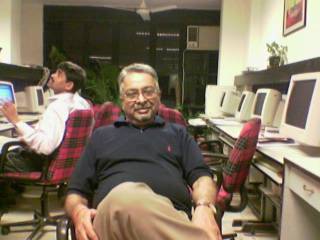
Delhi Transport Corporation - the Capital's sole public transport operator - is bleeding. It suffers a loss of Rs100 for each kilometre it travels. And experts say, another fare hike will not help. The last one - in 2009 - had resulted in a 70% increase in fare.
The swanky, air-conditioned low-floor buses zipping across the city might have made traveling by public transport more comfortable for Delhiites, but they have failed to turn around DTC's fortunes.
In a review of the performance of 36 State Road Transport Undertakings (SRTU) during April 2009-March 2010 carried out by the Ministry of Road Transport & Highways, DTC has come out as the highest loss maker, incurring a loss of Rs2,110 crore. Brihanmumbai Electric Supply and Transport (BEST) undertaking ranks second with losses to the tune of Rs477.95 crore followed by the Andhra Pradesh State Road Transport Corporation at Rs424.58 crore.
The top three profit makers in the list are Maharashtra Road Transport Corporation which earned a profit of Rs135 crore, the Bangalore Metropolitan Transport Corporation (Rs65.13 crore) and Karnataka SRTC (Rs48.85 crore). The total losses incurred by the 36 SRTUs put together increased by 47% last year from Rs3,209 crore in 2008-09 to Rs4,716 crore in 2009-10.
In 2009-2010, the loss incurred by DTC per day per bus was Rs15,051 - which was equal to the combined losses of road transport corporations of Andhra Pradesh, Gujarat , Uttar Pradesh and Karnataka. This despite DTC running not even half as many buses as these states and increasing its fare by 70% in November 2009.
DTC officials say that a bulk of its expenditure, about 49%, is on account of the interest the cash-strapped DTC has to pay the government annually on the loan it takes to run the public transport fleet. "DTC has been getting loan from the Delhi government since 1996 to support its day-to-day expenses. In 2009-10, the interest DTC paid was nearly Rs1,435," said an official.
Transport experts say poor debt management coupled with high establishment cost and mismanagement has bled the public transport operator. "DTC's staff-to-bus ratio is one of the highest in the country. Also, there is no scientific route planning done which adds to the loss," said PK Sarkar, Department of Transport Planning, School of Planning & Architecture.
As per the report, DTC's staff-to-bus ratio is also one of the highest amongst the 36 SRTUs. On an average there are seven staffers deployed for each DTC bus as against the ideal figure of five. This is one of the main reason behind DTC's high establishment cost.
Overall, the report has found that public transport systems in 36 major cities, despite getting staggering sums for modernization, have failed to make profits due to high establishment cost, poor management and wastage. "The SRTUs have to become self sustaining to give a boost to the country's public transport system. Take Bangalore Metropolitan Transport Corporation; with innovative ideas and proper management, they are running an efficient bus transport network. The model can be replicated elsewhere too," said Sarkar.
"In order to improve the efficiency and performance of public sector bus mode transport system, there is a need to improve vehicle technology, change of fleet composition in favour of new and more fuel efficient buses and strengthening of inspection and maintenance practices," the report recommends.
Courtesy: http://www.hindustantimes.com/StoryPage/Print/683695.aspx
© Copyright 2010 Hindustan Times
READ ALSO:
http://myroadiary.blogspot.com/2011/04/fake-licences-among-dtc-drivers.html
http://myroadiary.blogspot.com/2011/04/dtc-faults-ashok-leyland-buses.html
http://myroadiary.blogspot.com/2011/04/dtc-ride-1.html
http://myroadiary.blogspot.com/2011/04/dtc-ride-2.html
http://myroadiary.blogspot.com/2011/04/dtc-ride-3.html

No comments:
Post a Comment